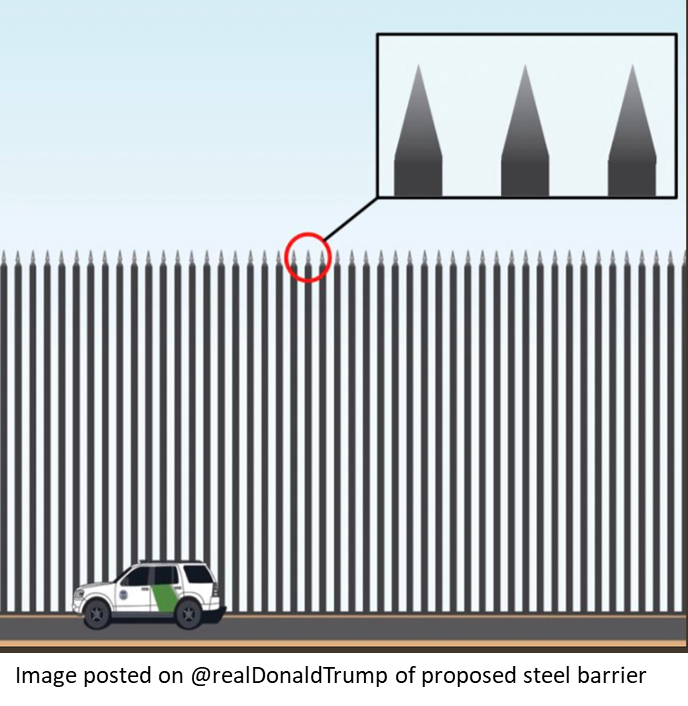Market Data

January 8, 2019
Trump Promotes Steel Barrier for Mexican Border
Written by Sandy Williams
President Trump’s border wall could be made of three million tons of U.S. steel if he is able to get the funding for construction. In a bid to make his request more palatable to Democrats, Trump said the wall could be made of domestic steel from the companies he has made great again.
“I’ll have it done by the United States Steel Corp., by companies in our country that are now powerful, great companies again,” he said Friday at the White House. “And they’ve become powerful over the last two years because of me and because of our trade policies.”
U.S. Steel would not comment on whether the president has contacted the company about the wall, but stated in an email to SMU, “We appreciate the continued interest in American-made steel and its importance to our nation’s economy and manufacturing base.”
What was formerly proposed as a concrete border wall has now transitioned to a see-through “steel barrier,” a difference that has made at least one Democrat senator more amenable to approving the funding.

In an interview on Fox News, Sen. Chris Coons (D-Del.) called the president’s change in rhetoric “progress.”
“I hope the president will hold to that position, because that is a minor but important difference in technology. A fourth-century concrete wall that you can’t see through will be a less effective border barrier,” said Coons on Monday. “I am someone who is willing to see more border fencing as long as we choose a technology that DHS says is going to be effective, and I do think his moving towards steel slats rather than a concrete wall, if it holds, is important.”
The American Iron and Steel Institute issued a statement regarding the potential use of steel for a barrier on the southern border, estimating such a project could require as much as three million tons of steel.
“Steel is readily available and is an innovative material that lends itself to a number of creative design solutions like the steel barrier,” said AISI President and CEO Thomas J. Gibson. “Steel’s strength and durability make it the preferred material of choice – whether it be for construction, like a barrier, or for cars, cans, transportation infrastructure, national security…the list is endless. There are several applications and technologies which could be used to produce an all-steel solution for a potential barrier, which could consume as much as three million tons of steel, according to our assessment.”
In an address from the Oval Office this evening, President Trump is expected to appeal for support for his border barrier, though late breaking press reports indicate he may stop short of declaring a national emergency in order to circumvent the congressional stalemate over funding. The speech will focus on the “Humanitarian and National Security Crisis on our Southern Border,” tweeted Trump.
The president currently faces a credibility crisis due to the many inaccuracies stated by the White House on immigration issues. The major networks plan to air a rebuttal to the speech by House Speaker Nancy Pelosi and Senate Minority Leader Chuck Schumer as well as fact-checking the president’s statements.
The government is currently in a third week of partial shutdown as Trump and Democrats remain at odds over the $5 billion request for border wall funding.







